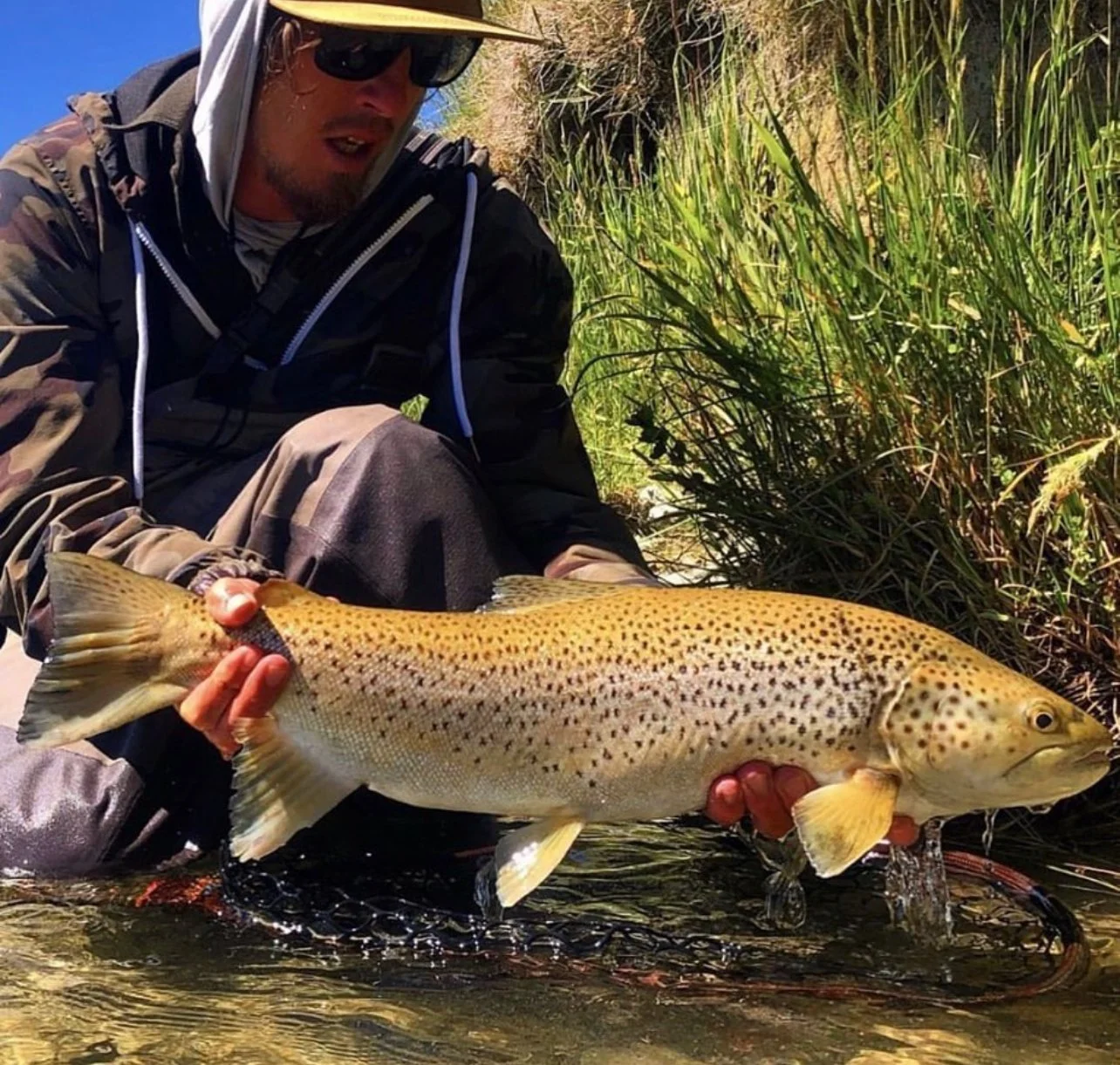Fly Fishing for Beginners: The Reach Mend
Written by: Trent Jones
When you're out on the water, the reach mend quickly becomes your go-to move, especially when you're presenting dry flies at an angle. It's like having a trick up your sleeve, giving you that extra edge. As a guide I have seen how much this can help put tricky fish in the net, so knowing and understanding what a reach mend is, can be essential for every fly angler.
Here's a comprehensive guide on mastering the reach mend technique:
Understanding the Reach Mend's Significance:
Of all the slack line presentations, the Reach Mend, also known as the Richmond, proves to be the most frequently used. When presenting flies at an angle and side onto your trout, the reach mend becomes indispensable for achieving a prolonged drag-free drift. By positioning the fly line above the fly with the reach mend, you can allow the fly to get a longer more effective drift helping to fool the trickiest of trout. In some areas I fish this is the only way to get a bite.
Concept of Mending:
Fly anglers are familiar with the concept of mending, which involves throwing line upstream or downstream to introduce slack into the system and achieve a drag-free drift. However, excessive mending can lead to undesirable pulling and dragging of the flies, potentially spooking fish. In my experience mending is usually most effective for nymphing and dropper fishing, but when fishing dries I generally try to fish the drift and recast and re-position for optimal control of the fly without needing to mend.
The Role of Reach Mend:
The reach mend offers a solution by allowing anglers to perform the mend before the fly hits the water. This preemptive action ensures that the fly begins fishing as soon as it touches down, eliminating the need for constant mending and reducing the risk of spooking fish. This works especially good when fishing directly across current, landing the fly line above the fly and giving it as much time as possible to drift freely.
Learning the Reach Mend Technique:
There are two versions of the reach mend: the on-shoulder or dominant arm reach mend and the off-shoulder or cross-body reach mend. Anglers must learn both variations to adapt to different fishing scenarios and river conditions. Just remember practice makes perfect so start implementing this any time you get a chance the more you do it the better you’ll get, I say that to people everyday on the water.
Execution of the Reach Mend:
Start with a basic overhead cast, false casting sufficient line to reach your target. On the forward delivery, stop the rod and allow additional line to slip or shoot through your fingers. Simultaneously, reach out as far as possible to either the right or left, painting a stroke across the target and bring the fly line above your fly.
Achieving Success with the Reach Mend:
Follow your fly line down and track its drift as the fly moves downstream. Take up the slack that appears as a result of the reach mend, ensuring that the fly lands directly in front of you with the line angling out to either the left or right.
Mastering the reach mend isn't just about adding another technique to your repertoire; it's about developing your connection with the water and the fish. It's about feeling the rhythm of the river. So, embrace the magic, let it become a part of your fly-fishing journey, and enjoy.





